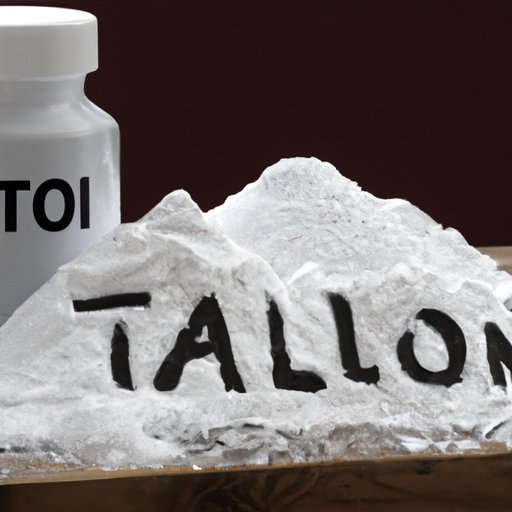Overview of Talc as a Mineral
Talc is a type of mineral that has been used for centuries in many different industries. It is composed of hydrated magnesium silicate and has a soft, powdery texture. Talc is found in nature in various forms and can be mined for commercial use. It has a variety of uses and is an affordable, non-toxic material. However, there are potential health risks associated with its use and it should be used with caution.
Definition of Talc
Talc is a mineral composed of hydrated magnesium silicate. It has a Mohs hardness of 1, which makes it the softest mineral on the Mohs scale. The chemical formula for talc is Mg3Si4O10(OH)2. It has a soft, greasy feel and a soapy or waxy luster. It is usually white, gray, green, or brown in color and has a weak cleavage.

Where it is Found in Nature
Talc is found in nature in many different forms. It can occur as veins, deposits, or layers in metamorphic rocks such as schist and marble. It is also found in sedimentary rocks such as shale and limestone. Talc deposits can be found all over the world, but some of the largest deposits are located in Austria, France, Italy, Germany, China, and the United States.

How Talc is Formed and Mined
Talc is formed by the metamorphism of dolomite or magnesite in the presence of water and carbon dioxide. It is typically found as veins or layers in metamorphic rocks. Talc is mined using either underground or surface mining techniques. In underground mining, miners drill tunnels into the rock to access the talc. In surface mining, large machines are used to remove the top layers of rock to access the talc deposits beneath.

Benefits of Talc as a Mineral
Talc is a versatile mineral with a variety of uses. It is cost-effective, non-toxic, and does not contain any hazardous components. Talc is also resistant to heat, electricity, acids, and alkalis. This makes it ideal for use in a wide range of industries, from cosmetics to pharmaceuticals.
Potential Health Risks Associated with Talc Use
Although talc is considered to be a safe mineral, there are potential health risks associated with its use. Respiratory toxicity is a concern due to the inhalation of talc particles. There is also evidence to suggest that talc may increase the risk of ovarian cancer when used in feminine hygiene products. Additionally, talc can be contaminated with asbestos, which is a known carcinogen.
Common Uses for Talc in Everyday Life
Talc is commonly used in a variety of industries for its versatile properties. In the cosmetics industry, it is used as an absorbent, thickener, and lubricant in makeup and other products. In the pharmaceutical industry, it is used as a filler, coating, and lubricant in tablets and capsules. In the food industry, it is used as an anti-caking agent, stabilizer, and release agent. In industrial applications, it is used as a mold release agent, lubricant, and insulation material.

Alternatives to Talc as a Mineral
If you are looking for an alternative to talc, there are several options available. Magnesium silicate is similar to talc but is less likely to be contaminated with asbestos. Kaolin clay is a type of clay that can be used as a substitute for talc. Calcium carbonate is another option and is often used in place of talc in cosmetics. Perlite is also a suitable alternative and can be used as an insulation material.


